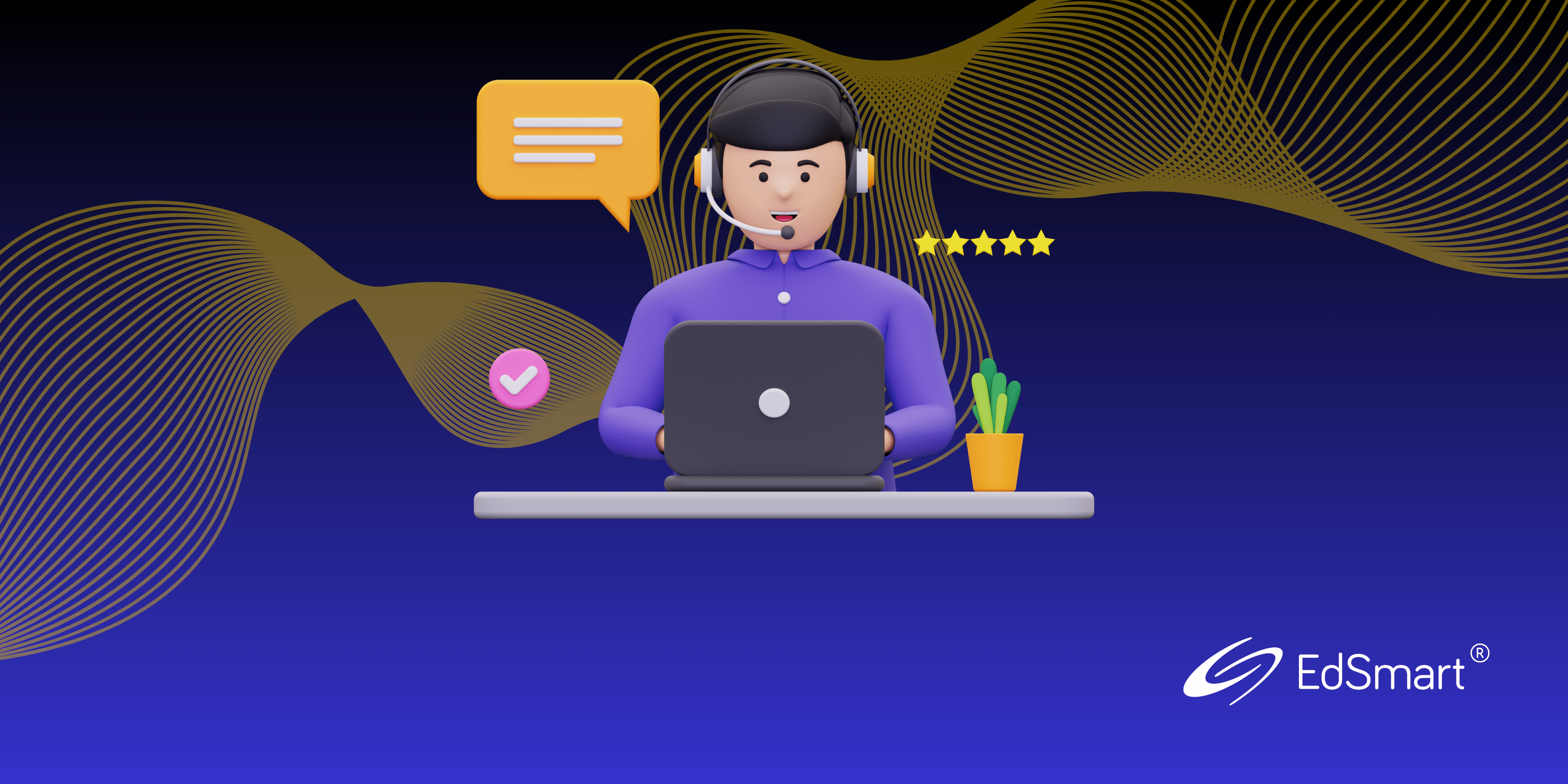Many of us may consider technology as an inhibitor of wellbeing, not an enhancer. It’s time to look at technology in schools in a different way.
The year 2020 was an eyeopener. As a community we’ve all been confronted with the need to prioritise in an unparalleled way and we’ve had to make some hard decisions about what matters most. Wellbeing is one priority that has risen to the top.
While the focus on wellbeing crosses sector and country divides, it’s being felt strongly in schools and education where classrooms have been emptied and children, parents and teachers pushed into remote learning. The wellbeing of all three groups has been tested across the school year, with students unable to interact properly with their classmates, parents forced to supervise while trying to maintain jobs and teachers pivoted into an entirely new teaching approach overnight.
Nerves have been frayed. Relationships have been strained. Learning has been disrupted. The fallout has been both a drop in everyone’s wellbeing and a call to act to take better care of ourselves.
So how can wellbeing not only be prioritised but encouraged to flourish in such a climate?
There are a number of factors that come to bear on our wellbeing but, in steering wellbeing front and centre, an unlikely ally emerges: technology.
Wellbeing: the writing’s been on the wall
Having experienced perhaps the most widespread disruption seen in more than a century in education due to COVID-19 in 2020, ensuring the wellbeing of a school’s community has never been more challenging.
A report published by the Education Horizons Group found that 59 percent of school leaders surveyed believed that ensuring the wellbeing of staff and students was the number one priority at their schools. Furthermore, of the teaching and learning leaders surveyed, 44 percent of the respondents described managing student wellbeing as among the top three challenges in education in 2019.
As these figures show, we’ve been heading in a direction where wellbeing was emerging as a major issue but everything’s been accelerated in 2020. So, now is the time to right a wrong.
Students, technology and wellbeing
In 2019, Microsoft and the Economist Intelligence Unit – part of The Economist publishing group – released a study on the work being undertaken in schools to enhance student wellbeing. In a summary of their findings, Brett Henebery, writing in The Educator Australia, noted that the survey of educators across 15 countries found 80 percent of the respondents supported the link between academic success and student wellbeing.
Despite the support for wellbeing, Henebery said the report had found that “school systems have not moved as quickly as educators to prioritise [it], with just 53 percent of educators saying their schools have a formal policy in place to support students’ wellbeing” and that “64 [percent] of educators said they lack the resources or time to support students’ wellbeing.”
However, technology has emerged as a significant player in helping teachers focus on improving the wellbeing of their students. When asked what teachers and educators found “most beneficial” in overcoming the barriers to improving student wellbeing, “58 [percent] mentioned immersive experiences that allow students to explore scenarios from the perspective of others, 49 [percent] cited tools that foster collaboration among students and 46 [percent] of educators favour tools that help collect and analyse data about students’ emotional states.”
Professor Dianne Vella-Broderick at the University of Melbourne is part of a research project looking at ways to enhance adolescent mental health through what she and her team are referring to as the positive education approach: “identifying and using personal strengths, savouring (which involves noticing and appreciating the positive aspects of life), gratitude, growth mindset, kindness, mindfulness and community engagement.”
The use of technology to ‘gamify wellbeing’ – as well as a curriculum that supports the positive education approach – is proving valuable in nurturing student wellbeing. As part of an Australian Research Council-funded project, Professor Vella-Broderick and her colleagues have developed the Bio-Dash Platform, which she describes as “a youth-friendly, unique, wellbeing and optimal performance program.”
Biofeedback and gamification are important planks in this platform. Where the biofeedback measures physiological factors, such as heart rate and respiration, the gamification aspect of the platform presents “game mechanics like competition, game rules and point-scoring [as a] task to motivate participation and maintain interest in the activity.”
“The Bio-Dash program is carefully designed to include experiential tasks and challenges that are youth friendly,” Professor Vella-Broderick writes. “By using an iPad or smartphone to engage in the biofeedback and gamification tasks, students get real-time information about their brain activity, respiration and skin conductance in response to strategies like deep breathing, mental imagery, mindfulness and emotion regulation through music, visual images, self-talk and savouring.”

“Both during and after each task, students can get information about whether they are in the relaxed, neutral or stressed zones with traffic light signals appearing on the screen or through auditory nature cues like waves or birds singing, that become quieter as we become calm, and louder with stress.”
Students at Melbourne’s Brighton Grammar participated in a number of trials to develop the Bio-Dash program. As Professor Vella-Broderick explains, “One example of a performance task that the students participated in was transforming an icy, winter forest scene into one that is green and bright with summer features. The greater the levels of relaxation, the faster the scene transforms, with the aim of altering the visual scene as quickly as possible. Students receive information about time taken to change from winter to summer and time spent in the red, amber and green zones. Green is the most relaxed.”
“Other tasks in the Bio-Dash program mimic real world stressors experienced by students, like high-pressure academic activities and public speaking.”
Having experienced perhaps the most widespread disruption seen in more than a century in education due to COVID-19 in 2020, ensuring the wellbeing of a school’s community has never been more challenging.
A report published by the Education Horizons Group found that 59 percent of school leaders surveyed believed that ensuring the wellbeing of staff and students was the number one priority at their schools. Furthermore, of the teaching and learning leaders surveyed, 44 percent of the respondents described managing student wellbeing as among the top three challenges in education in 2019.
As these figures show, we’ve been heading in a direction where wellbeing was emerging as a major issue but everything’s been accelerated in 2020. So, now is the time to right a wrong.
Teachers, technology and wellbeing
There are a number of factors at play that impact – positively, or otherwise – teacher wellbeing. Managing workloads and accessing professional development opportunities are an important part of job satisfaction for teachers, and job satisfaction is central to improving educator wellbeing.
“Classroom technology is heavily embedded within education,” writes Al Kingsley in Global Edtech. “When used effectively, it can make a real difference to both students and teachers in terms of saving time and boosting learning outcomes.” Having the technology is one thing, though, he continues, but the key is using technology that’s intuitive and easy to use in order to help reduce teacher workloads.
“Many teachers struggle to use technology effectively… which can cause them anxiety and stress. Schools can address this by having graded user modes… or create student digital leaders to help and support teachers in the class. Once the teacher is up and running, they can start to make the little gains that add up to a big win for teaching and learning in the classroom.”
As an example, grading student work via the use of online assessment technology “allows the teacher to design tests and examinations (including text, picture, audio and video questions) with minimum of effort, and monitor in real-time [their] progress and results,” argues Kingsley. Manual workload is reduced enabling teachers to dedicate more time to their core business of teaching and improve their rapport with students.
In the COVID-19 era, teachers at schools across Australia have adapted to conferencing tech platforms, like Zoom and Teams, as a way of delivering lessons. As well as the ability to engage remotely with students, the growth in the take-up of these platforms has also opened greater opportunities for professional development.
Andy Muller is the Principal at Tasmania’s Scotch Oakburn College. He says that embracing such technology has meant a number of improvements in staff satisfaction: “Tasmania is unique in that accessing professional development opportunities in Melbourne or Sydney involves one, possibly two nights, depending on when it finishes and flights… To move to online professional learning has been a godsend. We can do it easily and with minimal disruption to teaching.”

Parents, technology and wellbeing
It’s important for schools to take the wellbeing of parents into account as part of their broader school community. Technology can be used to help build and consolidate community, especially in a remote environment, and foster a positive contribution to wellbeing that will then, by extension, flow onto their children.
Once again, the COVID-19 pandemic gives us an almost perfect example of the ways in which schools can leverage technology to contribute to the wellbeing of parents in the school community.
Bradley Fry is the Principal at Tintern Grammar in Melbourne’s outer east. He says that technology played a vital role in keeping parents informed about the school’s approach to remote learning, and engaging both parents and students in the community.
As he explains, “We didn’t want to overload parents but we also wanted to make sure they knew we were focused on the academics and on the wellbeing and social welfare of their kids – and that we’re continuing to do co-curricular things. Technology has played an important role in tackling this challenge. Stability within families was one of the goals of our communication strategy; to ensure that we gave parents sufficient information, understanding and empathy, and they didn’t have to worry about whether school was working for their children.
“Our goal through all of this has been to try and make it really clear to the community that, like the phrase ‘we’re all in this together’, we really are all in this together,” he continues. “What’s come back from the community is they do feel like we have had a common set of aims and goals, and we’re walking a common pathway together. That has been authentically effective in promoting trust and confidence between the parents, staff and students in the school.”
“We’ve created a number of amazing choir productions and posted them to YouTube and LinkedIn, and some of them have been just remarkable. We asked the community to send in photos and videos of ‘A Day in the Life of Tintern’. We had over 150 people contribute. We then created this amazing video with a student choral piece embedded underneath and so forth. We’ve done a lot of wonderful projects like that.”

In conclusion
Technology has a considerable role to play in supporting wellbeing in schools. The use of technology reflects the modern world that students inhabit. Using platforms and methodologies that mirror the way today’s young people consume music, arts, entertainment and communication increases engagement and fosters the likelihood of genuine advances in wellbeing.
Additionally, technology can reduce teacher workloads and improve quality of education by increasing access to professional development and learning for teachers, which then impacts staff retention for the better.
Technology facilitates greater, and more effective communication between schools, teachers, parents and students by helping develop a sense of community and shared experience. Sharing information electronically, and using video sharing platforms increases collaboration, with the feeling of community impacting positively on wellbeing across the entire school community.
It’s time to turn technology into a friend, rather than an enemy.



